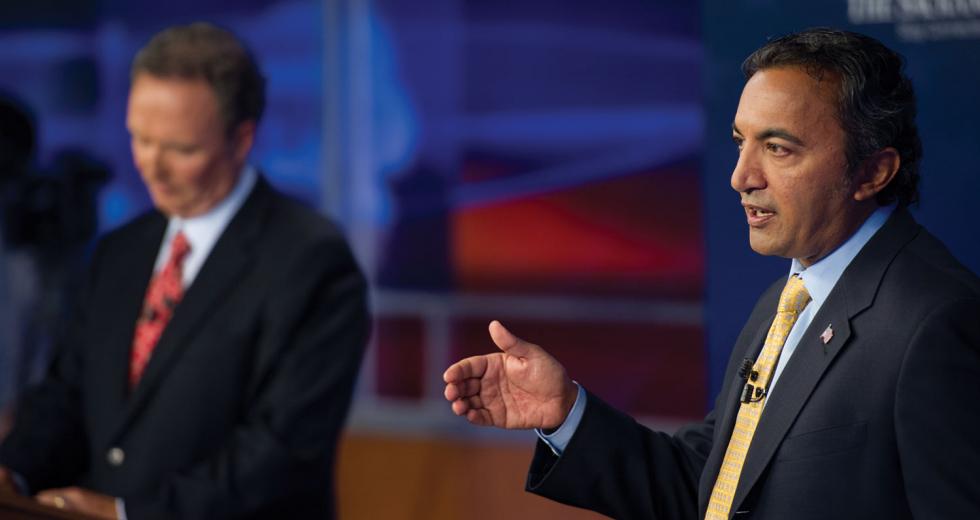The 2012 election may have spelled the end for a 30-year boomlet of Republican legislative and congressional representation in Sacramento.
In the spring of 1978, all the Sacramento-area members of Congress and the Legislature were Democrats. But in November of that year, the suburban foothills congressional district now represented by GOP Rep. Tom McClintock turned red. In 1998, Republican Doug Ose won the suburban Sacramento congressional district, and by the early 2000s, all but one of Sacramento’s Assembly districts was held by a conservative.
Today, however, there’s not a Republican Assembly district to be had within all of Sacramento County. The district Ose won in ’98 reverted back to the Democrats with the 2012 defeat of long-time GOP Rep. Dan Lungren by Democratic Rep. Ami Bera.
And it’s not as though Lungren and the Republicans didn’t see change coming. As long ago as 2008, I wrote in these pages that the registration and voting trends in suburban Sacramento were moving against them. Republicans needed to deal with a more moderate electorate. In 2006, the last year Lungren comfortably won his congressional seat, the district had a GOP registration edge of nearly seven points. By 2010 it had dropped to just 3.4 percent.
That year, Republicans blew a safe Assembly district in the Sacramento suburbs by nominating an extreme social-issues conservative. When they took over the House of Representatives, they pushed several unsuccessful, socially conservative bills through. One dealt with rape in cases of abortion and was co-sponsored by Missouri Rep. Todd Akin, whose U.S. Senate candidacy later collapsed when he started talking about “legitimate” rape.
The Democrats had a field day tying Lungren to such lunatic positions, and Lungren was also hit by a vicious ad accusing him of killing people by opposing embryonic stem cell research.
And then, in 2012, Lungren lost the advantage of the sweetheart gerrymander that had included three small Republican counties in his district. The new district drawn by the Citizens Redistricting Commission included all of the GOP-voting suburbs and none of the Democratic city of Sacramento but still contained a 6,000-vote Democratic edge.
Lungren didn’t lose because of new district lines; he lost because Sacramento County moved away from the Republicans. In 2008, a comparable presidential year, Lungren received 130,000 votes in the Sacramento portion of his district compared to the 118,000 tallied for his Democratic opponent. In 2012, running in roughly the same area, Lungren received 132,000 votes, but Democrat Bera received 142,000.
Dems knew early on that Lungren was vulnerable in a presidential election year, and the Democratic super PACs poured millions into beating him. But there was something else that Lungren and the Republicans apparently missed: Their economic message failed in California’s suburban communities while the Democrats’ social message was well received.
On top of that, Lungren’s district had a 9 percent Latino voter registration (and 6 percent Asian). Republican opposition to comprehensive immigration reform — and especially the Dream Act for young immigrants — was a nail in their own coffin. Lungren’s pro-life views might be in sync with Latino voters, but the GOP stance on immigration reform assured a solid rejection of Republican candidates.
The GOP anti-tax nostrums was the last layer on the crumbling cake. Proposition 30, the Jerry Brown tax-increase measure, did better in Sacramento County than it did statewide.
Lungren’s loss and the loss of the overlapping Assembly district won by Democratic Assemblyman Ken Cooley was replicated in a number of marginal suburban portions of the state. Republicans lost districts in suburban segments of Ventura County, Riverside County and San Diego County that they had hoped to win.
So are the Sacramento suburbs — and suburbs throughout the state that went Democratic this year — now permanently Democratic? Three decades ago, Republicans regularly won in Bay Area suburbs like Los Gatos, Walnut Creek and Menlo Park. Now, these wealthy but socially liberal enclaves return nothing but Dems.
Are local suburbs the next to convert?
Recommended For You

GOP on Deck
Can the Republican contenders overcome Brown in 2014?
With just over a year until the midterm elections, California’s next gubernatorial race is starting to take shape.

Party Planning
Setting the table for the capital cluster
State trade groups generate nearly $90 billion in annual spending nationwide through education and training programs, meeting products and services, and local, state and federal taxes, according to the California Society of Association Executives. Roughly 15 percent of that is spent right here in California, and much of it winds up in the till of the hospitality industry.



